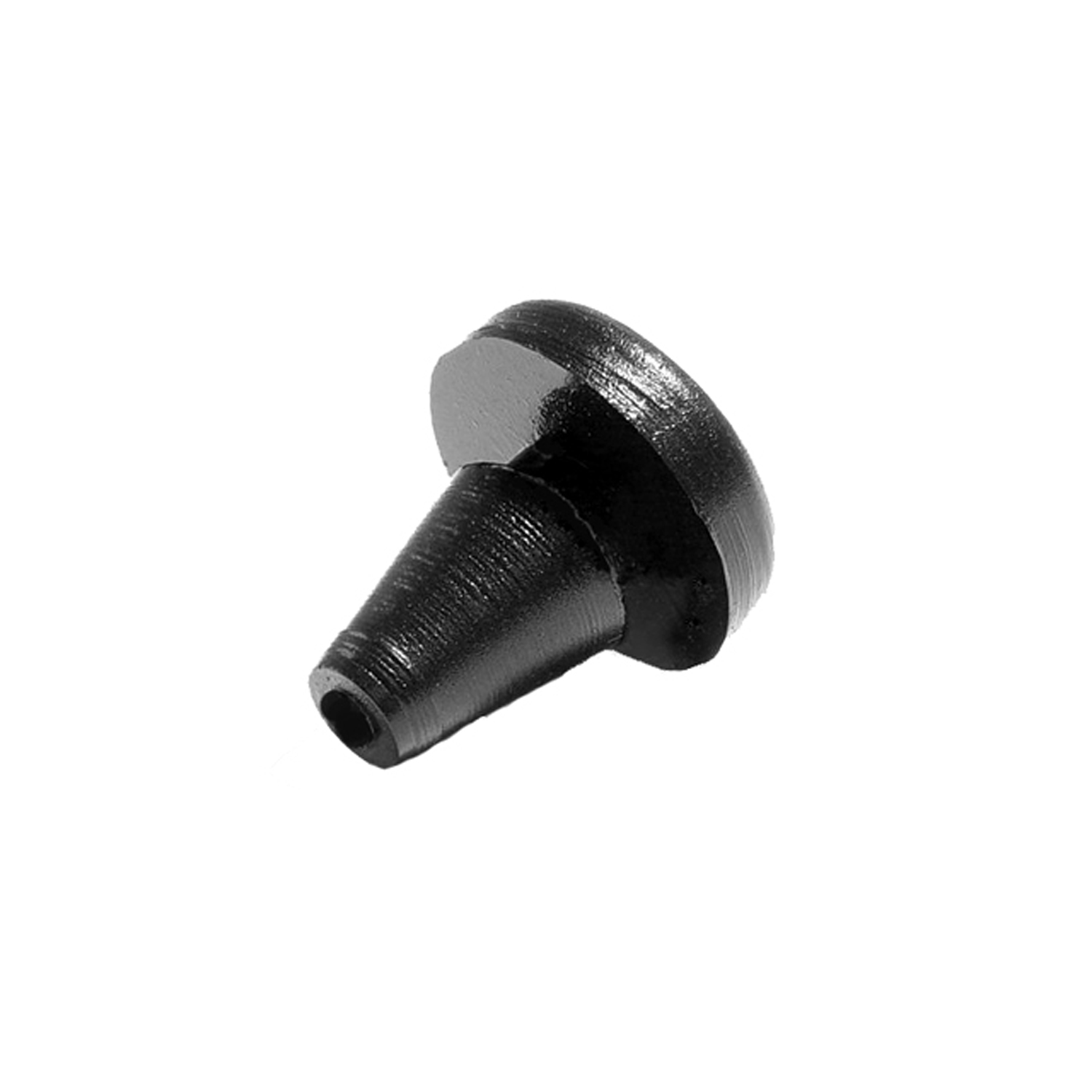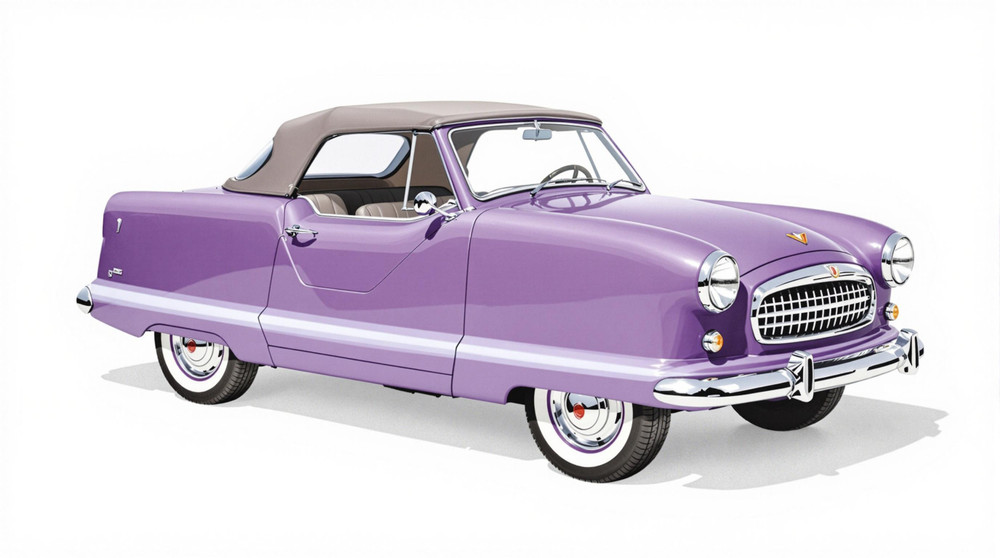Image of 1956 Metropolitan Series 1500, Note: These illustrations use artistic license and may differ from actual historical models.
Performance Metrics
Fundamental Metrics
Emotional Appeal
MMP Rating
| Engine Specifications | |
|---|---|
| Engine Options: | Austin A50 Inline-4 |
| Displacement Range: | 1.5L (1489 cc) |
| Horsepower Range: | 52 hp at 4,500 rpm |
| Torque: | 77 lb-ft at 2,400 rpm |
| Compression Ratio: | 7.2:1 |
| Ignition System: | Coil and distributor |
| Cooling System: | Water-cooled |
| Performance Specifications | |
| 0-60 Time: | 19.3 seconds |
| 1/4 Mile Time: | Estimated 21.5 seconds |
| Top Speed: | 77 mph |
| Transmission and Drive | |
| Drive Type: | RWD (Rear Wheel Drive) |
| Transmission Type: | 3-speed manual |
| Fuel and Efficiency | |
| Fuel System Type: | Single SU carburetor |
| MPG: | 30-35 mpg |
| Dimensions and Brakes | |
| Brakes: | Hydraulic drum brakes |
| Wheelbase: | 85 inches |
| Weight: | 1,785 lbs |
Note: Specifications for classic cars are given to the best of our ability, considering the limited and variant data available.
Unveiling the Charm of the 1956 Metropolitan Series 1500
The year is 1956, and the automotive landscape is brimming with innovation and style. Among the era's icons stands the Metropolitan Series 1500, a car that redefined compact luxury and became a symbol of post-war optimism. Crafted by the Nash-Kelvinator Corporation and later under the auspices of American Motors, this pint-sized marvel was designed for an urban environment, yet it captured the hearts of suburban America and beyond. Its historical significance lies in its role as a pioneer of small-car production in the United States, a market traditionally dominated by larger vehicles.
A unique fact that often surprises enthusiasts is that despite its all-American image, the Metropolitan's body was actually built in England by Austin Motor Company. This transatlantic partnership was a notable moment in automotive history, showcasing early globalization in car manufacturing.
Design and Innovation: A Compact Masterpiece
The 1956 Metropolitan Series 1500 boasted a distinctive exterior with its two-tone paint job, "continental" rear-mounted spare tire, and charming chrome accents. Its diminutive stature was complemented by rounded curves and a friendly grille that exuded character. Inside, occupants were greeted with a surprisingly spacious cabin for its size, featuring cozy seating upholstered in stylish patterns and colors. The dashboard maintained simplicity while offering essential gauges with clarity and elegance.
Technologically, the Series 1500 was ahead of its time with unitized body construction and rack-and-pinion steering—a rarity among American cars of that era. Color options ranged from classic black and white to more vibrant shades like Berkshire Green and Autumn Yellow, with P903 Coral Red being among the popular choices.
While most Metropolitans came as two-door hardtops or convertibles, it was the convertible model that captured imaginations with its top-down freedom. This body style has since become emblematic of the Metropolitan's enduring appeal.
Historical Significance: More Than Just a Pretty Face
The Metropolitan's impact on automotive design cannot be overstated. It challenged American norms by proving that small cars could find success in a market dominated by large sedans and gas-guzzlers. Its economical nature and stylish design made it an attractive option for second-car households during the booming post-war economy.
What truly set this car apart from its contemporaries was its international roots and forward-thinking design philosophy. It helped pave the way for future compact cars in America and remains a beloved classic for its unique blend of British craftsmanship and American flair.
Performance and Handling: Zippy Urbanite on Wheels
Underneath its hood lay a modest but peppy Austin-built 1.5-liter inline-four engine, propelling the Metropolitan to respectable top speeds around 75 mph. Acceleration from 0-60 mph took about 19 seconds—a leisurely pace by today's standards but adequate for the vehicle's urbanite aspirations.
Handling was nimble thanks to its light weight and compact dimensions, allowing it to navigate through city traffic with ease. Drivers often praised the Metropolitan for its smooth ride over bumps and stable composure on windy roads. The driving experience was characterized by an endearing engine purr that became synonymous with this cheerful runabout.
Ownership Experience: A Joyful Companion
The Metropolitan Series 1500 found its niche as a daily driver for those living in tight city spaces but also enjoyed popularity as a show car due to its unique aesthetics. Maintenance was relatively straightforward, making it an accessible classic for enthusiasts without extensive mechanical backgrounds.
Fun Facts: The Metro's Quirky Legacy
Among some of the more intriguing trivia is that Elvis Presley once owned a Metropolitan—adding to its cool factor significantly. While not known for breaking speed records, it did set sales records as one of America's first successful subcompacts.
Despite its charm, some critics lambasted the car for its lack of power compared to larger American models—a criticism often overshadowed by its many admirers who valued style over speed.
Collector's Information: A Compact Investment
Today, collectors cherish the Metropolitan Series 1500 for its uniqueness and historical importance. With roughly 95,000 units produced during its entire run from 1954 to 1962, it's moderately rare but still accessible to enthusiasts. Prices vary widely based on condition but generally range from $10,000 to $30,000—with pristine examples fetching higher figures.
The value trend for Metropolitans has been appreciating modestly over time as more collectors seek out these quirky classics for their charm and historical significance.
Conclusion: Celebrating an Automotive Icon
The 1956 Metropolitan Series 1500 stands as a testament to innovation during an era when bigger often meant better in America's automotive scene. Its blend of British manufacturing prowess with American marketing genius created an enduring legacy that continues to captivate car enthusiasts around the world. As we close this chapter on one of history's most delightful vehicles, let us remember the Metropolitan not just as a product of its time but as a timeless classic that still brings smiles wherever it goes.
1956 Metropolitan Series 1500 Catalog of Parts
 1956 Metropolitan Series 1500 Hood Side Bumper. 5/8" O.D.,5/8" High. Each-SB 11Hood Side Bumper. 5/8" O.D.,5/8" High. Each
1956 Metropolitan Series 1500 Hood Side Bumper. 5/8" O.D.,5/8" High. Each-SB 11Hood Side Bumper. 5/8" O.D.,5/8" High. EachWhy Choose Metro?
For over 100 years, Metro Moulded Parts has been the pinnacle of quality in classic car restoration parts. Our commitment to precision and authenticity in every component ensures a perfect fit and an OEM-level appearance.
- Expert Craftsmanship & Quality: Each part is a testament to our dedication to reliability and perfection, crafted from original designs and thoroughly tested.
- Advanced Technology: We use cutting-edge techniques to create flawless, long-lasting parts that surpass others in performance.
- SuperSoft Sponge – The Ultimate Door Seal: Not only are our door seals 30% softer than competitors', but they're also guaranteed to never leak. They effectively reduce wind and road noise, enhancing your classic car's comfort and driving experience.
- Proudly American: Our parts are a product of American craftsmanship, made in the USA with a spirit of excellence and heritage.
- Unrivaled Warranty: We back our products with a 30-year industry-leading warranty, a testament to our confidence in their quality.
Join us in preserving the legacy of classic cars with parts that are crafted for perfection, not just made.

